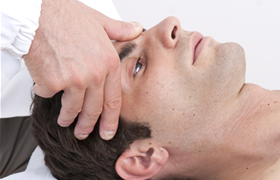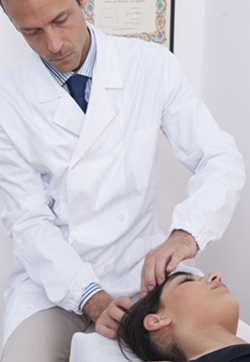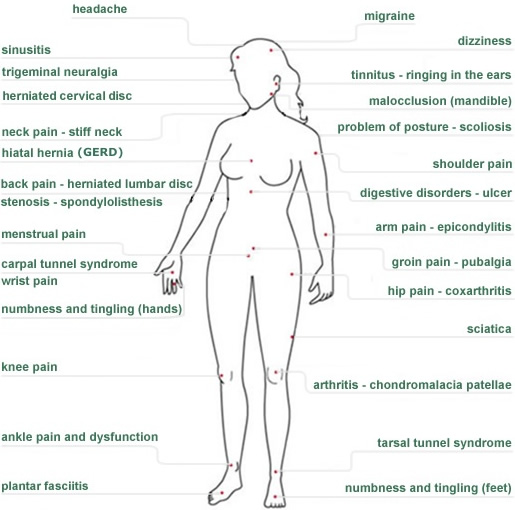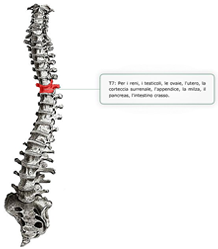A.K. Cranio-Sacral Therapy

It would seem to most people that the skull is a solid mass of bone that serves to protect the brain. However, the skull is actually made up of several bones, which are held together by fibrous bands known as sutures. As we breathe, these bones move in a very minute, but definite pattern, with specific movements occurring on inspiration and expiration.
This cyclic movement of the cranial bones acts as a pump to move cerebro-spinal fluid down from the brain, along the length of the spinal cord, and back up from the sacrum. Cerebro-spinal fluid is essential for providing lubrication to the brain and spinal cord and for transporting nutrients to and from the brain and out to spinal nerves.
Cranial Faults
Cranial bones can jam or become locked at their sutures following a bump on the head or from unequal muscle tension due to postural imbalances. Such misalignment affect respiration and create problems elsewhere in the body.
The majority of cranial faults are not mechanical lesions, but are secondary to the immune system. For this reason, Dr. Morrison uses a holistic approach, assessing patients in their entirety rather than just treating individual body parts for temporary relief.
Listed below are some of the most common conditions associated with cranial faults:
| Headache | |
| Neck and back pain | |
| Asthma | |
| Visual disturbances | |
| TMJ Syndrome | |
| Fibromyalgia | |
| Hypertension | |
| Insomnia | |
| Tinnitus / hearing disturbances | |
| Nervous tension |

The above list is not exhaustive. Many problems which seem in remote areas of the body can be related to cranial faults.
A.K. Cranio-Sacral Therapy
During the 20th century, methods of diagnosing and treating cranio-sacral imbalances began to emerge in the US.
The method most commonly used by Applied Kinesiologists involves the application of light pressure to specific areas of the head and face, in synch with the patient's breathing.
By gliding bones back into proper movement, blockages are released which has a curative affect on numerous conditions. Patients will often experience improved concentration and a deep sense of relaxation and equilibrium. Previous Page

 SCHEDULE AN APPOINTMENT
SCHEDULE AN APPOINTMENT









